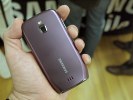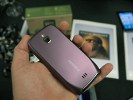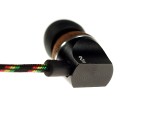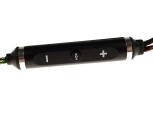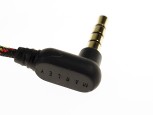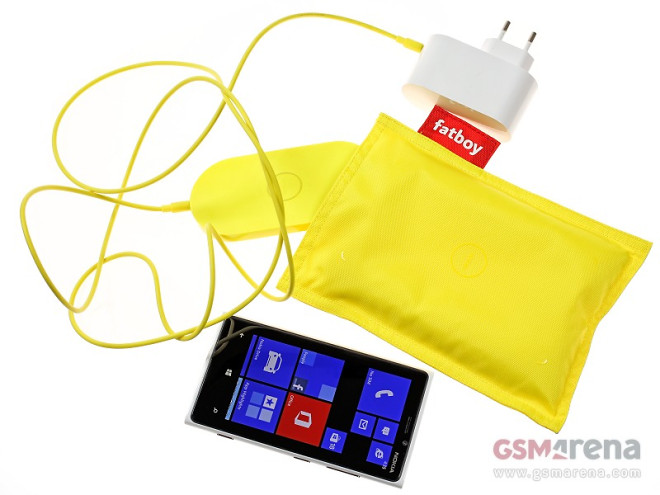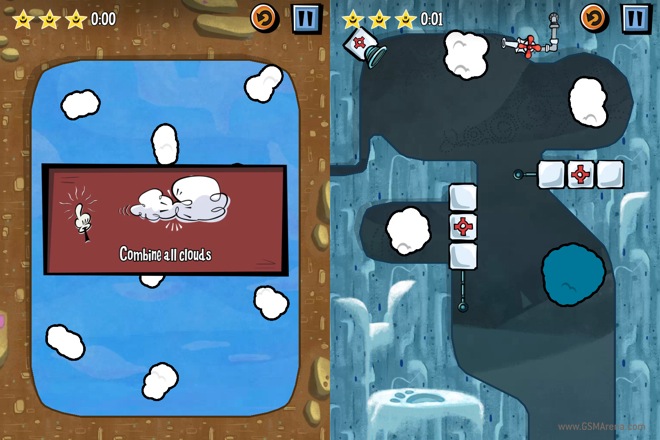'Plants vs. Zombies' for iOS game review
The original Plants vs. Zombies was an enormous success. Initially released on Windows and Mac back in 2009, the game was later ported to iOS next year and several other platforms over the years, including the Xbox 360, PlayStation 3, Nintendo DS, Android, Windows Phone and even BlackBerry 10. It is one of the most popular tower defense games and also one of the most popular mobile games of all time.

The sequel to this smash hit comes four years after the original. However, the late release is not the only thing the ‘It’s about time’ tagline is referring to. The game travels through various time periods and lets you play in different locations. The new game also features some brand new plants, zombies, gameplay mechanics and game modes. So what are we waiting for? Let’s take a closer look at it.
|
Title
|
Plants vs. Zombies 2
|
|
Developer
|
PopCap
|
|
Platform
|
iOS
|
|
Release Date
|
August 15, 2013
|
|
Content Reating
|
9+
|
|
Size
|
44.7MB (downloads additional data after installing)
|
|
Price
|
Free, with in-app purchases
|
Gameplay
Plants vs. Zombies is essentially a tower defense game at heart and the sequel sticks closely to that formula. The left side of the map is your territory, which you have to protect from the zombies approaching from the right. To fend them off you place plants in the middle that automatically attack when they sense the zombies approaching. If the zombies get to the plant they will consume them and keep moving to your territory. As a last line of defense, there is a lawnmower for every every row on the map that will instantly kill every zombie in its path once the zombie reaches it (there is no lawn as such in the new game, so the presence of lawnmowers here is merely a homage to the first game). If a zombie still manages to cross the line then the game is over and you start the level again.
Fortunately, it rarely ever comes to that. Plants vs. Zombies 2 features a brilliant ensemble of plants that will absolutely destroy every zombie crossing their path. Most of your favorite plants from the previous games are still here and are now joined by some new ones. Take the Bonk Choy, for example. This plant has a short range melee attack that will beat the undead daylight out of the zombies. However, the attack is only limited to the tile directly in front or behind the plant and like most other plants it cannot defend itself so it’s always best to plant it directly behind a Walnut. The zombies get trapped in front of the Walnut while the Bonk Choy keeps hitting them, eventually finishing them off with a sweet uppercut.

Another one of the cool plants is the Snapdragon. The Snapdragon breathes fire (yes, a firebreathing plant, but that’s hardly the strangest thing in the game) in a wide range that covers three tiles in front of it. The Coconut Cannon shoots a powerful attack straight in front of it but then temporarily deactivates for a while. Bloomerang can hit three targets in front of it and its projectile swings back (as you’d expect from a good boomerang), which causes further damage. The Spring Bean will toss any zombie that walks on it into the water.
These are just some of the new plants introduced in the game. But what makes them cooler is a new feature called Plant Food. Plant Food temporarily supercharges your plant and enables it to release a devastating attack that can clear the entire map of zombies in some cases. Each plant has a different supercharged attack. The Peashooter, for example, will pelt its enemies with a rapid fire attack that can take down all but the strongest zombies in front of it. The Walnut gains a special metal shell which makes it even more resistant to attack. The Cabbage-pult will throw an enormous quantity of cabbage across the map that will severely damage every zombie it falls on. The Bonk Choy will release a flurry of fists not just in front of it but in all eight directions that can take down zombies that are in the neighboring lane as well. The Snapdragon literally flies up and torches the nine squares in front of it that burns most zombies to a crisp.
The list goes on. These attacks are not just useful but also ridiculously fun to watch and makes you look forward to unlocking more plants just so that you can find out what their special attack is. Plant Food is available in limited quantity and can be obtained by killing the zombies that glow green. You get three slots by default to store your plant food and often there is a decent supply. This is one of the best additions in Plants vs. Zombies 2 and makes the game so much cooler than the original.

Another addition is power-ups. These let you take down zombies with simple gestures. There are three in total: one lets you pinch on zombies to kill them, the second lets you swipe on them to throw them off the map and the third one lets you swipe on them to release an electric attack that turns them to ash. Each power-up lasts for just a few seconds once you enable it so you have to be quick. Also, using a power-up consumes the in-game currency so you can’t be too crazy with it. These are best used when you get absolutely overwhelmed by zombies, especially during the final wave and you are about to lose the level and have no other alternative but to get down and dirty and take out the zombies yourself.
The original Plants vs. Zombies took place on a lawn and on the rooftop in the later levels. In Plants vs. Zombies 2, the game takes place in three different locations across different time periods (there is a backstory involving Crazy Dave’s taco and going back in time to eat it again but I won’t get into that). Currently there is the Ancient Egypt, Pirate Seas and Wild West worlds available but you can see the silhouette of a fourth one as well, which should be coming some time in the future.

Each world has its own set of levels. There are ten main levels and several side levels. As you progress from one level to the next, you unlock new plants along the way. To play the side levels, you need to have a specific number of keys that provide access to these levels. The keys are obtained while playing the game but are a bit of a rare occurrence so you never seem to have enough of them.
As you play the levels, you get a star for some of them. Once you finish all the main levels in one of the world, you unlock the next world but you can’t play it yet. To play the next world you need to have a certain number of stars and you never get enough stars by playing the main levels once. So after you finish the last level in a world the access to the next level is unlocked but along with that the levels you just finished get upgraded to three stars so now you have to go back and play them again.
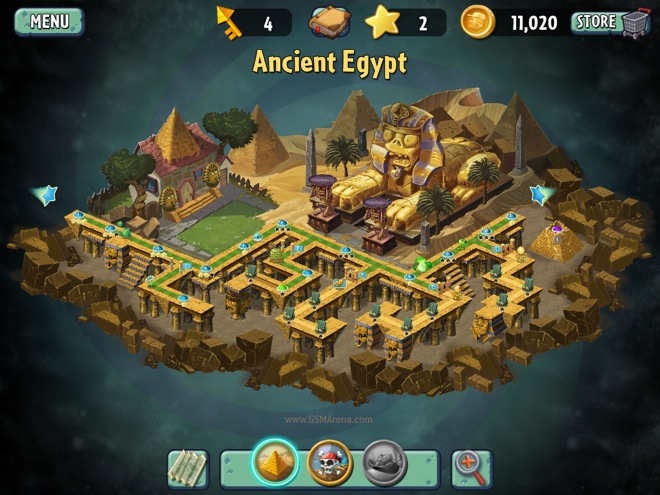
This would have become extremely tedious if the game just made you play the levels again in the same manner but the three stars have to be earned by doing specific tasks. Each level gets three stars and each star has a specific list of demands that you must meet to earn it. For example, in some levels you will have to, say, not get any plants killed, cannot plant more than a certain number of plants and cannot lose any lawnmowers. There are other rules as well, such as not planting for a certain amount of time, earning a specific amount of sun points, spending only a specific amount of sun points, not planting over the moss, not letting the zombies reach the flower bed, etc. Fail to complete any of the list of requirements for that level and you have to start again.
When you add these restrictions to the already tense gameplay, it makes the game even more exciting. When you earn one star, you can then move on to the second star for that level and after that the third. The challenge gets progressively more difficult for the same level, not to mention as you move forward to the next level. This makes meeting the minimum number of stars for the next world a lot more challenging than you imagined.

Along with the usual gameplay mode, there are also some challenge levels where you have to survive a wave of zombies. In one mode, plants keep appearing on the side of the screen randomly and you have to plant them to take down the zombies. This mode was present in the previous game as well. In another mode, you have to reveal and match the pattern on the shields that the Camel Zombies carry. There are no plants in this mode and the only way to kill the zombies is to match the patterns correctly. In one level you just have to use the Coconut Cannon to take down hordes of zombies hanging on ropes. These challenges are fun and serve as a nice change of pace from the usual game mode.
There is also challenge arena that gets unlocked after you finish the ten main levels in a world. This arena throws levels at you one after another and you only get a certain number of plants and one extra which you have to choose from choice of three. You can’t purchase Plant Food or power-ups more than once in this mode and your lawnmowers and Plant Food carries forward to the next challenge. Each world has its own challenge arena with its own set of levels.
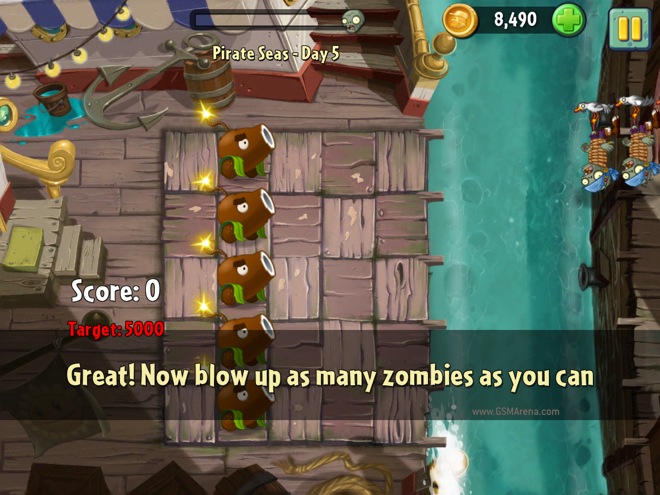
Speaking of the worlds, each of the three worlds also has its own set of gameplay conditions and matching enemies to go with it. The Egypt level, for example, has tombstones that block your attacks but are not present in the pirate world. The pirate world on the other hand has water bodies on the side and zombies jump right across them and land right in front of your plants, very close to your side of the map.
As mentioned before, zombies differ across worlds, as well. The Egypt world, for example, has the sarcophagus zombie, which is literally a zombie walking around with a sarcophagus around it, that offers it an insane amount of protection from attacks. It also has the sun stealing zombie, which takes away suns as they appear. The pirate world doesn’t have either of these but has an annoying pirate zombie with parrots on his shoulder, which tend to fly away with one of your plants and there is not much you can do about it other than killing him quickly. There is another that walks with a barrel in front of him that protects him from your attacks. The barrel upon breaking releases two smaller zombies.
The game mixes and matches the map design with the zombies and the restrictions for earning more stars so even if you play the levels again you don’t get much of a sense of repetition. And if you can’t wait to go to the next level, there is always the in-app purchases.
The in-app purchases or IAP forms a big part of Plants vs. Zombies 2, as we have come to expect from free games these days. The game has a certain way of implementing IAP, which makes it less annoying than others. You can spend real money to unlock worlds without having to earn the prerequisite number of stars, although you still have to play through the main ten levels first. You can spend money to buy plants that otherwise cannot be obtained by any other method. You can spend money to purchase more in-game coins that lets you use power-ups, or buy slots to have more plants for a level or start off with a certain quantity of sun points and Plant Food for every level.
Thankfully, none of this is mandatory. Don’t want to spend money to unlock the next world? Just play the current one a gazillion times (although in different ways) till you earn the stars required for the next one. Don’t want to spend money on plants? Just use the ones you get for free. The paid ones aren’t all that great anyway and you can totally do without them.
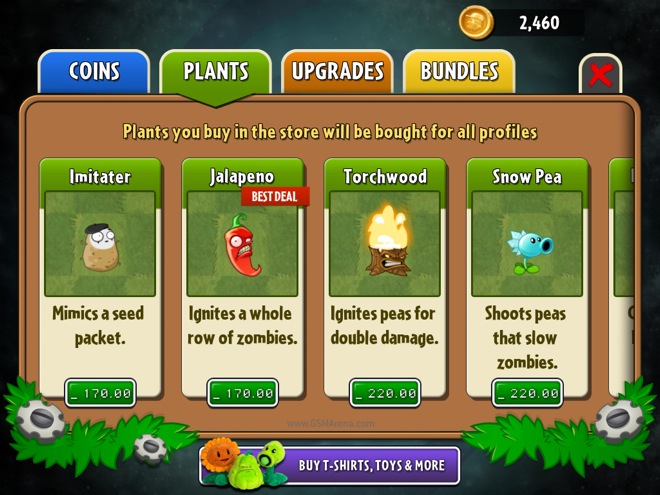
What irks me about the IAP in this game is the pricing. Most games have IAP priced around $1-2 but in Plants vs. Zombies 2 everything costs upward of $2.99. While there are no hard and fast rules regarding the prices and EA is free to price them as they want but spending $4 on a single plant seems absurd, especially when it’s not particularly great.
Usual quibbles about IAP aside, the gameplay in Plants vs. Zombies 2 extremely enjoyable. To be honest you are not doing a whole lot new over the previous game but because the old game was so brilliant and the new one improves upon it in several ways the gameplay is all that more exciting. The rush that you get when you are surrounded by a dozen zombies and you have to manage your plants and your resources, while making sure you don’t break any of the rules that would cost you a star is addictive and something not a lot of games can match, including some of the AAA titles from EA themselves.
Graphics and Sound
The original Plants vs. Zombies featured animated cartoon style visuals that were cute and rather amusing for something that had blood thirsty zombies. The new game retains the general look but the artwork has been enhanced significantly. There is a lot more variety in the level design now and the older plants have all been given an overhaul. The animations have been improved so now, for example, you can see the Peashooter actually bring up the pea up its stalk before dramatically spewing it out instead of it just appearing from its mouth. The animations get even crazier when the plants are supercharge so once again, the Peashooter will go full commando when you supercharge it and you can see a tiny army helmet appears on its head as it shoots a billion peas at a frantic rate. The little nuances will be especially noticeable to those who played the original game but will be appreciated by all.
The sound once again is very good. The game uses stereo positional audio, so things that happen on the left are heard through the left speaker and vice versa. You can hear the sound of attacks hitting the zombies on the right and as the zombie continues walking left you hear the sound move towards the center. It’s nice but slightly overdone because the sound seems to be coming from further away than the size of the display you are holding in your hands.
The sound effects themselves are well done. From the vicious attacks of the plants to the groaning of the zombies and the mumbling of Crazy Dave all sound nice. And the music is good as well. Plants vs. Zombies 2 features some modified tracks from Laura Shigihara’s superb score for the original game. Having said that, I still prefer the soundtrack of the previous game over the current one. It was more memorable and although the new score sounds great while you’re playing you won’t remember it as well as the one from the previous game once you’re done.
Verdict
The original Plants vs. Zombies is a brilliant game that is enjoyable even today. The second one improves upon it in almost every way while adding some new things, which is exactly what you expect from a good sequel. Yes, the presence of IAP is a bit of a dampener but it’s just unobtrusive enough to not cause lasting damage to the game’s enjoyment. There’s no doubt that just like with the original you are going to have a lot of fun playing it and spend hours and hours planting in-game plants while your real plants wither from a lack of attention. And it’s free so if you have an iOS device you should be playing this game, like, yesterday. So now if you’ll excuse me, I have some stars to earn.
Rating: 9/10
Pros: Fantastic, addictive gameplay, new plants and Plant Foods are a brilliant addition, fun new gameplay modes, impressive animations and sound
Cons: Replaying old levels to earn stars can be a bit of a drag, IAP are expensive
App Store




